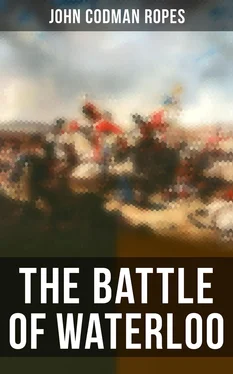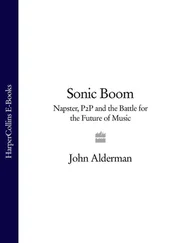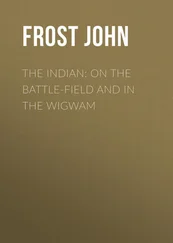“I have got news from Mons, from General Dörnberg, who reports that Napoleon has turned towards Charleroi with all his forces, and that there is no longer any enemy in front of him; therefore orders for the concentration of my army at Nivelles and Quatre Bras are already despatched. * * * Let us, therefore, go170 * * * to the ball.”
In spite of this evidence, there is no little difficulty in arriving at the conclusion that orders for a general concentration of the Anglo-Dutch army at Quatre Bras were issued by the Duke of Wellington either during the night of the 15th and 16th, or on the morning of the 16th. It is not only that no such orders as Müffling says the Duke told him he had despatched,171 that no orders directing (to use the Duke’s own words) “the whole army to march upon Les Quatre Bras,”—have ever been produced,—that, in fact, not a single order of Wellington’s, directing any troops, except those belonging to the reserves, upon Quatre Bras, has ever been brought to light. This, though true, is not conclusive. It is stated by Colonel Gurwood172 that the original instructions issued to Colonel De Lancey173 were lost with that officer’s174 papers; and it is of course possible that there may have been instructions for him to issue orders for the different corps or divisions to concentrate at Quatre Bras which were thus lost.175 But the real difficulty in holding the theory that, at some time during the night, or in the early morning of the 16th, the Duke issued such instructions, is, that such a theory is apparently inconsistent with the only orders176 given on the early morning of the 16th, of which we have copies, and also, with the Duke’s actions during the same period.
Let us consider these points in their order. The orders to which we have just referred are two in number; they are said to have been signed by Colonel Sir W. De Lancey, the Deputy Quarter Master General (or chief-of-staff). They are simply dated 16th June, 1815; neither the place nor the hour is given, but they must have been written at Brussels;177 and in the early morning. They are both addressed to Lord Hill. The first directs him to move the second division of infantry upon Braine-le-Comte, and informs him that the cavalry have also been ordered to the same place. Now, although to move from Enghien, to which place these divisions had been directed in the preceding order, to Braine-le-Comte, is to approach Quatre Bras; it certainly is not the same thing as to march to Quatre Bras. Braine-le-Comte is in fact sixteen miles west of Quatre Bras. This despatch closes by saying:—“His Grace is going to Waterloo.” This would seem to indicate that the Duke had not made up his mind at that time whether he would personally go to Nivelles or to Quatre Bras, the roads to which points branch off at Waterloo.178
The next despatch orders the troops at Sotteghem,—Stedmann’s 1st Dutch-Belgian Division and Anthing’s brigade,—to proceed to Enghien, a place some twenty-five miles to the west of Quatre Bras.
Here, then, are orders issued on the 16th, in the early morning, to be sure, as we may suppose, but still some hours after the Duke had heard from General Dörnberg at Mons that the French had turned off towards Charleroi, and there is no word in them indicating any intention or expectation of a concentration at Quatre Bras.179 It is inconceivable that these orders, or at least the first of them, should have been worded as they were, if the Duke, at the time of giving them, had the intention of concentrating his army at Quatre Bras. They are evidently based on the leading idea of the first two sets of orders, namely, of a general movement of the army towards the east, so that a concentration at Nivelles could be easily made.
The facts in regard to Picton’s division also seem to show that not only at the time when the orders to that division were given, say at 2 A.M., but even when the Duke left Brussels at about 7.30 A.M., he had not made up his mind to concentrate his army at Quatre Bras. Picton was ordered to halt at Waterloo, where, as we have said, the roads to Nivelles and Quatre Bras branch off. He arrived there about ten, halted a couple of hours,180 and, “about twelve o’clock, an order reached him for the continuation of the march of his division upon Quatre Bras.”181 It would certainly seem that when the Duke was riding to Quatre Bras that morning,—passing Picton’s division on the road,—he had not decided whether to order Picton to Nivelles or to Quatre Bras.182 He knew that the latter place was occupied by a brigade or more of Dutch-Belgian troops, but he had not ordered them there himself,—he had on the previous evening ordered them to Nivelles; they had, in fact, come to Quatre Bras and stayed there contrary to the orders which he had given; and apparently he had not yet fully decided whether he would withdraw them or reinforce them.
If, therefore, we are to make up our minds solely from Wellington’s acts in the morning of the 16th, and from the only orders issued that morning of which we have copies, taken in connection with the previous orders of which we have cognizance, it would seem, that the Duke from the first intended to occupy Nivelles strongly, as a good thing to do in any event; and that he finally determined on concentrating his army in the neighborhood of that town. It is a fair inference from these acts and orders that he had not, before he left Brussels, contemplated concentrating his army further to the eastward; and that it was not until he had ridden to Quatre Bras, and seen, as he supposed, a very small force183 in front of him, that he, bearing in mind, no doubt, that the reserves on the Brussels road and the troops at Nivelles were not far off, decided to hold the place, and take the risk of the enemy’s overwhelming him by a superior force; and that he then,—just as soon as he had made up his mind to this,—sent his aides to Picton and the rest on the Brussels road, and to Nivelles; but that not even then was a general concentration of the whole army at Quatre Bras ordered, in the strict sense of the word, though, no doubt, every effort was made to collect there all the troops that could be reached.
But there are two pieces of evidence which remain to be considered, which contradict this inference, and warrant the conclusion that before he left Brussels Wellington changed his mind, and did order a concentration of his whole army at Quatre Bras, as he says in his Report he did. The first is the letter184 which the Duke wrote to Marshal Blücher on the morning of the 16th, and the second is the “Disposition185 of the British Army at 7 o’clock A.M., 16th June,” “written out for the information of the Commander of the Forces by Colonel Sir W. De Lancey.”
The letter in question never, we believe, saw the light until it was published at Berlin, in 1876, in Von Ollech’s History of the Campaign of 1815. We shall give a full translation of it later on; the original is in French. The “Disposition,” of which we give below an exact copy,186 is not signed by Sir W. De Lancey, but by DeLacy Evans. Evans,187 who became afterwards a distinguished general officer, was in 1815 a Major, and was serving as an extra aide-de-camp to Major General Ponsonby, who commanded the second brigade of cavalry. His attestation to this memorandum, therefore, can hardly have been made at the time; but we have a right to suppose that the paper was in De Lancey’s handwriting, or that Evans had some other sufficient grounds for thus attesting its authenticity. It purports, in our opinion,188 to be a statement, prepared by Wellington’s chief-of-staff, of the probable positions at 7 o’clock A.M. of the 16th of June, of the various divisions of the army, and of their respective destinations.
That this “Disposition” was relied on by Wellington when he wrote his letter to Blücher, seems, by comparing the two papers, very clear. We find, for example, that the “Disposition” states that, of the four divisions of the 1st Corps, Cooke’s was at 7 A.M. at Braine-le-Comte, marching to Nivelles and Quatre Bras, Alten’s was at Nivelles, and marching to Quatre Bras, and those of Chassé and Perponcher were at Nivelles and Quatre Bras. We then find the Duke writing to Blücher, that, at 10.30 A.M., one division of this corps was at Quatre Bras and the rest at Nivelles. It cannot be denied that, so far as this corps is concerned, certainly, the two papers hang together perfectly well. Wellington had a perfect right to suppose that Cooke could get from Braine-le-Comte to Nivelles, or nearly there, between seven and half-past ten; and as for the positions of the other divisions, he simply follows the memorandum which his chief-of-staff has prepared for his information, and on which he had an undoubted right to rely. We shall give, later on, other instances of this agreement between these two papers. They seem to us to demonstrate the authenticity of the “Disposition.”
Читать дальше












